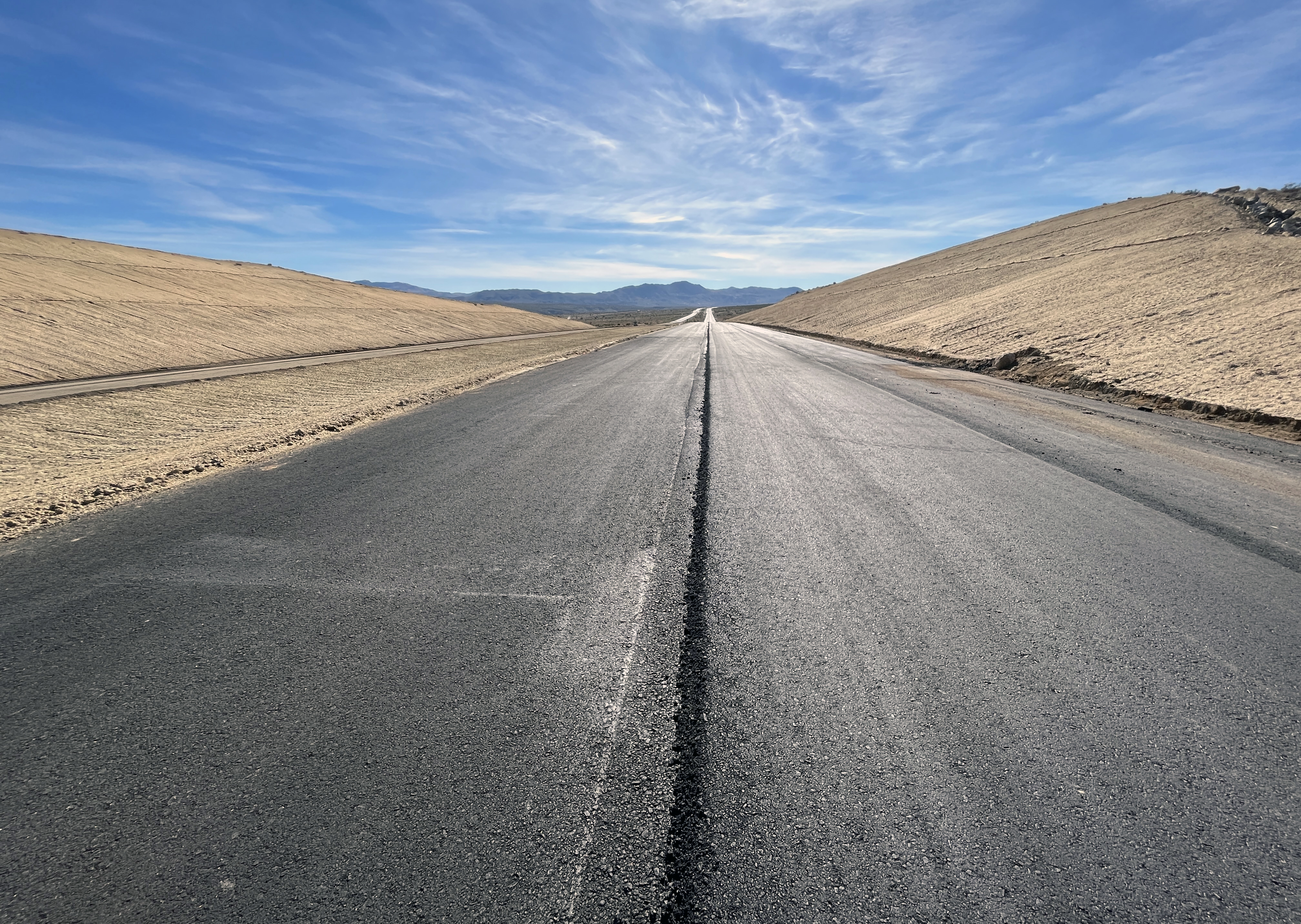Olancha-Cartago 4-Lane Project
Project Information
The California Department of Transportation (Caltrans), as CEQA lead agency, and the Federal Highway Administration (FHWA), as NEPA lead agency with the support of Inyo County Local Transportation Commission, will convert approximately 12.6 miles of the existing U.S. 395 in Olancha and Cartago from a two-lane conventional highway into a four-lane expressway from postmile 29.2 to postmile 41.8 in Inyo County.
The Olancha-Cartago 4-Lane Expressway project will pass west of the town of Olancha and the Los Angeles Aqueduct. Once the alignment crosses Olancha Creek, the project will cross the Los Angeles Aqueduct and continue north through Cartago along the existing highway to meet up with the four-lane section of U.S. 395 to the north of Cartago. The northbound and southbound lanes will be separated by a 100-foot unpaved median. A connector that will link the current highway to the expressway will be constructed at postmile 36.4, approximately one mile north of Lacey Lane.
The project will increase roadway safety, close the gap between existing four-lane sections to the north and south, meet present and future vehicular and goods movement traffic demands, and bring the highway up to current design standards. It will include features such as new 10-foot shoulders, new at-grade intersections, two new structures over the Los Angeles Aqueduct, and a new non-motorized multi-use undercrossing.
U.S. 395 is a Priority Interregional Highway in the Caltrans Interregional Transportation Strategic Plan, part of the National Network of truck routes, and included in the Caltrans Highway Freight Network. The highway is vital to the economy of the Eastern Sierra region and is one of five major recreational corridors identified for Southern California.
Desert Tortoise Relocation Video
Joshua Tree Relocation Video
Project Cost & Timeline
Project Cost:
The estimated cost of this project is $134.8 million.
The federal Infrastructure Investment and Jobs Act of 2021 (IIJA) is responsible for $33.9 million of the total project funds.
Project Timeline*
- December 6, 2008: Caltrans hosted public meeting.
- October 2010: Public comment period on Proposed Negative Declaration and Initial Study/Environmental Assessment.
- September 23, 2015: Caltrans hosted public hearing on Draft Environmental Impact Report at the Olancha Fire Station.
- May 2017: Environmental Document (EI/RA) approved.
- November 2021: Construction of desert tortoise fence completed.
- January 31, 2022: Main construction began.
- October 7, 2024: Southbound traffic moves to the new southbound lanes.
- November 19, 2024: Northbound traffic moves to the new northbound lanes
- December 19, 2024: State Route 190 connector opens to the public
- June 11, 2025: Northbound traffic fully transitioned to northbound lanes
*Schedule subject to change.
![]()
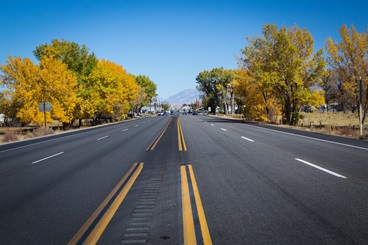
Construction PIO Contact
Michael Lingberg
Public Information Officer
Construction
Caltrans District 9
(760) 920-0280
Project Updates
June 11, 2025 - Northbound traffic on U.S. 395 fully migrated to the new northbound lanes. All U.S. 395 traffic is now on the newly constructed lanes of the highway.
December 19, 2024 - Construction of the new State Route 190 Connector south of Olancha opened. This is the third and final connection from the new lanes of U.S. 395 to old U.S. 395/State Route 190.
November 19, 2024 - Northbound traffic on U.S. 395 moved to the new northbound lanes of the highway from the southern border of the project area south of Olancha to the newly constructed Crystal Geyser Road.
October 7, 2024 - Southbound traffic on U.S. 395 permanently moved to the new southbound lanes of the highway through the project area.
May 23, 2024 - Paving has resumed on the southern end of the Olancha-Cartago 4-Lane Project after a winter suspension. Construction crews will aim to lay up to 120,000 tons of asphalt this year after they laid approximately 85,000 tons last year. The traffic switches currently in place at the north and south ends of the project area will remain in place throughout the summer and drivers can expect more traffic switches in the future. The project is estimated to complete construction in the fall of 2025.

November 6, 2023 -
December 16, 2022 - Work continues on the Olancha-Cartago 4-Lane Project the to provide for the future lanes of U.S. Highway 395 in southern Inyo County. As seen in the picture, material will be moved from hills and placed in depressions to provide for a standard road design to provide motorists appropriate grades and ample sight distances all improving the functionality and safety of the roadway. Slopes will be contour graded to match the surrounding and revegetated for aesthetics.
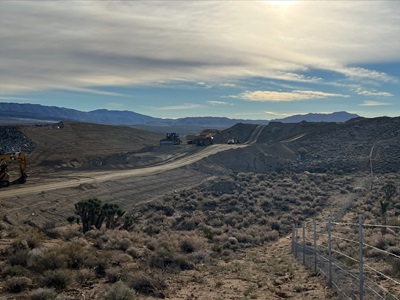
November 17, 2022 - Construction of the bridge decks over the Los Angeles Aqueduct is progressing on the Olancha-Cartago 4-Lane Project. The photo below shows a Bidwell concrete screed spanning transversely across the deck formwork from the bridge rails. It will be used to ensure the concrete is placed at the correct location, depth and smoothness.

October 7, 2022 - Crews have begun work on the north end of the project near the town of Cartago in preparation for the new southbound lanes.
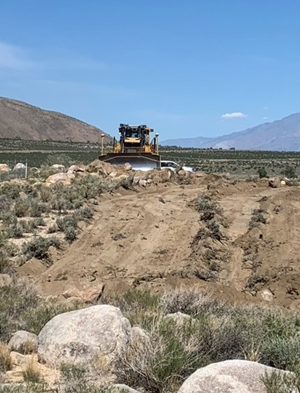
September 9, 2022 - On the Olancha-Cartago 4-Lane Project, crews are installing concrete girders on the bridge over the Los Angeles Aqueduct using a 100-foot crane. There are 16 girders in all, eight for each bridge. The girders are preset with concrete and rebar. Each one has 24 pretensioned cables that create a negative camber; this is why the girder looks slightly bent when being installed. When the rest of the bridge is constructed and traffic flows over the bridge, the girders will straighten out but not be stressed.



August 5, 2022 - Bridge construction over the Los Angeles Aqueduct continues as part of the Olancha-Cartago 4-Lane Project in southern Inyo County. On the north side of the aqueduct, the alignment of the future lanes of U.S. Highway 395 meets with the connector approximately one mile south of Pine Street in Cartago. The desert tortoise fence marks the edges of Caltrans Right of Way on both sides of the alignment. Crews will clear the land north of the connector at a later date.

July 21, 2022 - This is a D10 bulldozer. Standing almost 15 feet tall and weighing more than 171,000 pounds, it is one of the primary machines used to clear the land, alongside smaller D6 bulldozers within the Olancha-Cartago 4-Lane Project. Equipped with a 11.5 foot wide blade in front and 4-5 foot ripper shanks in the back, the D10 bulldozer is a useful tool for dislodging granite boulders from the ground and pushing them, along with soil and other loose materials, into piles. This machine is shipped to job sites in three sections and must be assembled.
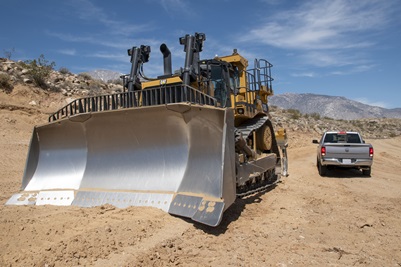



July 7, 2022

Crews are placing rebar on the footing for the bridge abutments and wingwalls on the south side of the Los Angeles aqueduct.
June 1, 2022 - Crews have completed excavation for the bridge abutments on the south side of the Los Angeles Aqueduct and will begin excavating the abutments on the north side. Drainage system installation continues throughout the project.
May 25, 2022 - Work continues on the installation of drainage culverts, preparation for bridge footings and the creation of access roads on the southern end of the project.
May 18, 2022 - Throughout the summer, the main worksite will be from on the southern end of the project area to the crossover about one mile south of Pine Street in Cartago. Crews are installing culverts throughout the project area.

The foundation for the bridge abutment over the Los Angeles Aqueduct is being prepared.
March 23, 2022 – Crews finished clearing and grubbing the land from the connector between the new highway and the existing roadway in Cartago, approximately one mile south of Pine Street.
March 14, 2022 – Crews finished clearing and grubbing the land from the south end of the project to Walker Creek Road. The term “clearing and grubbing” refers to the process of clearing plants, rocks, boulders, and removing debris to prepare the land for the new road.
February 23, 2022 – Crews finished relocating 149 Joshua Trees within the project area. Most trees were transplanted only 20-30 feet from their original location using a tree spade. They will be watered twice throughout the summer to ensure their survival. A video depiction of the transplant process is in production, with an anticipated release date of May 20, 2022.
January 31, 2022: Following the completion of the fence, construction began.
November 2021: Construction crews completed work on the Desert Tortoise Fence. This project is a precursor to the Olancha-Cartago 4-Lane Project, designed to minimize the impact of construction on the desert tortoise.
Title VI Information
The California Department of Transportation (Caltrans) assures that no person shall, on the basis of race, color, or national origin, be excluded from participation in, be denied the benefits of, or be otherwise subjected to discrimination under any program or activity receiving Federal financial assistance, as required by Title VI of the Civil Rights Act of 1964, as amended, the Civil Rights Restoration Act of 1987, and Federal Executive Order 12898 (Federal Actions to Address Environmental Justice in Minority Populations and Low-Income Populations).
Caltrans will make every effort to ensure nondiscrimination in all of its programs and activities, whether they are federally funded or not, and that services and benefits are fairly distributed to all people, regardless of race, color, or national origin. In addition, Caltrans will facilitate meaningful participation in the transportation planning process in a nondiscriminatory manner.




